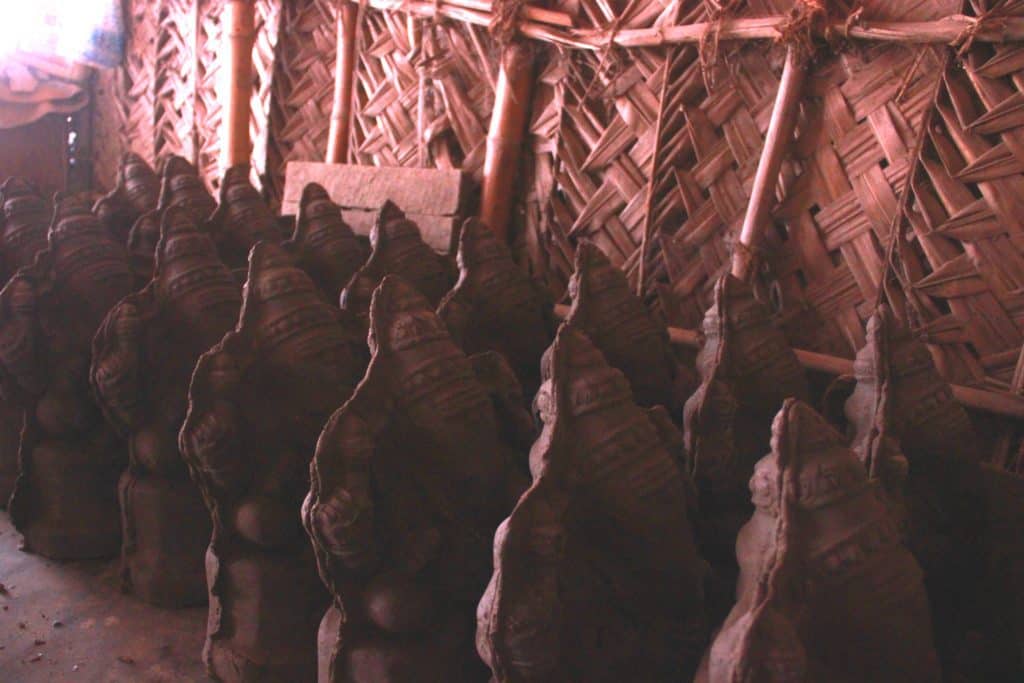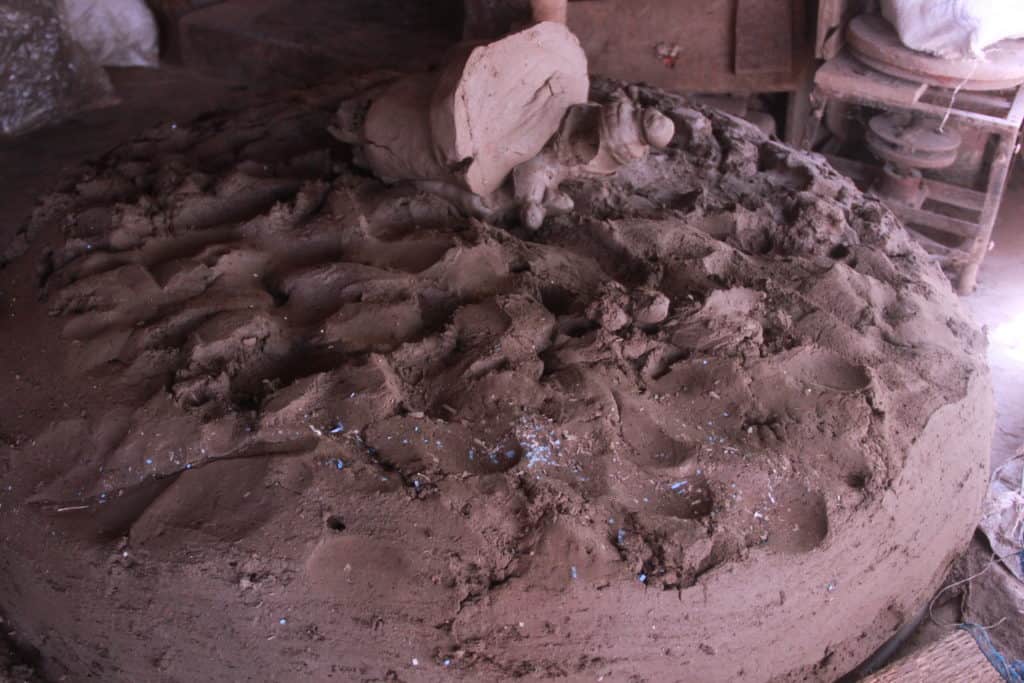The narrow lane of Koya Arunagiri Street in Royapettah leads to the house of R S Venkatesan, a seasoned potter, who has made Chennai his home. Although it is just 5.30 am, he and his wife Vasanthi V are already up and busy with their work. A potter’s wheel, a bunch of firewood logs, dried cow dung cake and other paraphernalia lie scattered around their compound.
Koya Arunagiri Street runs just behind the Royapettah Hospital in Chennai. Years ago, the entire stretch was known for the potters who lived here. Venkatesan informs me that over the years, many from the community have given up the art, for the sake of financial stability.
A third-generation potter with an SSLC degree, Venkatesan himself migrated to Chennai in 1979 to work in odd jobs so that he could support his eight sisters and parents. His hopes were soon shattered, as he did not find any opportunities and had to get back to the potter’s trade in this metropolitan city.
A family affair
Pottery is an art that brings the family together. Every family member contributes their bit to the art, right from a very young age. The art of making clay products is a strenuous job and hence, and the work is divided among other family members. The men ought to take adequate rest and plan the work to ensure the production is smooth and seamless.
“I was born to a potter and also got married to one. Besides household chores, I help the men at home to make earthenware products,” says 52-year-old Vasanthi, “While my husband does the part of the work that demands rigorous physical work, I help him in drying the products, painting and designing the pots.”
Vasanthi and Venkatesan have two sons and a daughter. Although all three of them have chosen different fields of work, they grew up helping their parents in the ancestral trade and have also been trained by Venkatesan. They continue to help their parents during their leisure time.
“I picked up the craft from my father as a child. But I know it will not help us secure our future. Hence I chose to become a government employee,” says Kumar V (28), a bus conductor and the eldest son of the couple.
Penniless and broken
Although stainless steel has replaced the earthenware on our kitchen racks, potters continue to make specialised clay pots that are particularly useful for making fish curry, dal, pongal, or as nombu pot during Deepavali. The artisan community depends primarily on Indian festivals such as Pongal, Deepavali, Karthikai Deepam and Ganesh Chathurthi to make money. Even so, it finds its customer base rapidly dwindling.
While the coronavirus has hurt all professions, across the world, the suffering of these artisans, who solely depend on daily sales, has been tremendous. Entire families have been left penniless during the lockdown.

Venkatesan and Kumar are currently jobless, his second son took a 75% pay cut and his daughter was also sacked during the COVID downturn. To ensure the sustenance of his family, Venkatesan also works as a lathe turner at a mechanic shop. However, this alternative occupation has also not brought in any money during the lockdown.
Circumstances have forced them to halve their food intake through the lockdown phase. They haven’t been able to sell any of the products they made, and hence stopped making new vessels. Attempts by Venkatesan and Kumar to find odd jobs to earn money also failed. Vasanthi shares that they had to take a loan to meet their basic needs over the last few months.
The family hoped to make up for lost business, at least to some extent, during Ganesh Chaturthi. They made 200 idols, of which, over 100 are still lying in the corner of the house. The pandemic has redefined the way people celebrate festivities. All celebrations have been low-key and artisans are struggling.
“Some people buy Ganesha idols during Vijayadashami, I am counting on them. I, however, know I cannot sell all the remaining statues. We may have to dissolve the idols and reuse the clay,” Venkatesan adds.

Risks of being an artisan
Members of the community say that being a potter in this day and age translates to pain and suffering, COVID or not. This year, the COVID crisis has made things worse but even otherwise, artisans have to grapple with uncertainties of nature; for example, during monsoon, they cannot pit fire the products when it rains.
In general, potters toil for six months to save money ahead of the monsoon. “When it rains, I turn to my alternative profession — lathe turning. With the income generated from this secondary work, we usually manage to sail through the rest of the year,” Venkatesan says.
Secondly, any durable earthenware requires good quality soil. “A tricycle loaded with soil costs around Rs 4,000 and firewood is hard to find in the city. Earthenware can be made only with the kind of soil found in lakes and ponds. It is very difficult to find soil as people need permission from the government to mine. We end up shelling out more to buy soil and logs for pit firing the products,” says Venkatesan.

That is not all. Often, they get yelled at by neighbours, as the process of pit firing generates smoke and pollution.
Retail business
M Balamurugan (42), a retailer in Old Washermenpet, who began selling earthenware as a child, says trends, in general, have changed. “Even during the festivities, at least 20% of the seasonal products remain unsold.”
Balamurugan gets goods from Porur, Thandalam in Chennai, Periyapalayam and Arakkonam. “We have to pay the transportation cost and fuel; hence there is an inevitable difference of Rs 30/40 when we sell here. People increasingly prefer steel and plastic these days, as they find earthenware products costly,” he adds.
Helping potters survive
It is evident that the community needs intervention and support to preserve the craft. How can it be done?
“Just as rice and pulses are distributed free of cost through PDS outlets during Pongal, pots should also be given with these. That way, there will be more demand generated, and our community will be benefitted,” Kumar suggests.
P Bharath, an artist, says that the potters themselves should communicate the benefits of their products to attract customers. “Most often, the products are sold through retail agents who do not have enough knowledge about it. Secondly, there should be a government scheme to acquire and sell their products. It increases the visibility of such earthen vessels,” he adds.